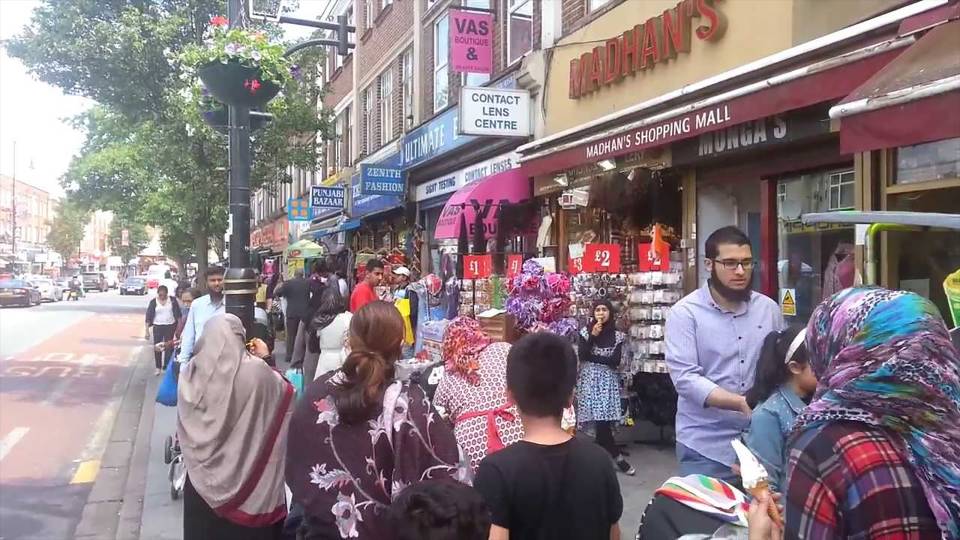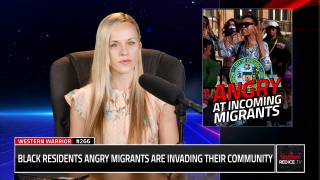Another study finds that diversity leads to mistrust and lack of community cohesion
It turns out the most cohesive neighborhoods are almost never the most diverse ones. But does that mean we shouldn't fight against self-segregation?
Ed comment: Why fight against the natural force of self organization? This is backed up by the study that Harvard political scientist Robert Putnam did on how diversity hurts civic life.
Urbanists and planners like to imagine and design for a world of diversity. Diversity, we like to think, is both a social good and, as I’ve argued, a spur to innovation and economic growth.
But to what degree is this goal of diverse, cohesive community attainable, even in theory?
That’s the key question behind an intriguing new study, “The (In)compatibility of Diversity and Sense of Community,” published in the November edition of the American Journal of Community Psychology. The study, by sociologist Zachary Neal and psychologist Jennifer Watling Neal, both of Michigan State University (full disclosure: I was an external member of the former’s dissertation committee), develops a nifty agent-based computer model to test this question.
Their simulations of more than 20 million virtual “neighborhoods” demonstrate a troubling paradox: that community and diversity may be fundamentally incompatible goals. As the authors explain, integration “provides opportunities for intergroup contact that are necessary to promote respect for diversity, but may prevent the formation of dense interpersonal networks that are necessary to promote sense of community.”
Their models focus on the emergence of the “community-diversity dialectic” based on two simple principles: homophily – the tendency of people to bond with others like themselves – and proximity – the tendency of people to bond with those nearby. Their models look at how the strength of these basic tendencies affect the evolution of neighborhoods comprised of two distinct populations (say by race, class, ethnicity and so on). In these simulated neighborhoods, the possible levels of integration ranged from 0 percent (totally segregated) to 50 percent (totally integrated).
In the images below, the authors show three sample neighborhoods with low, medium, and high levels of integration. Notice how much denser the resulting social networks are (in the bottom row) in the highly segregated neighborhood at far left. (You can also play around with an interactive version of the model on Neal’s website, adjusting the levels of homophily, proximity, and integration yourself).

After 20 million-plus simulations, the authors found that the same basic answer kept coming back: The more diverse or integrated a neighborhood is, the less socially cohesive it becomes, while the more homogenous or segregated it is, the more socially cohesive. As they write, “The model suggests that when people form relationships with similar and nearby others, the contexts that offer opportunities to develop a respect for diversity are different from the contexts that foster a sense of community.”
The graph below, from the study, plots quite plainly the negative relationship between community cohesion and diversity.
These findings are sobering. Because homophily and proximity are so ingrained in the way humans interact, the models demonstrated that it was impossible to simultaneously foster diversity and cohesion “
But, of course, this is the result of computer simulations of reality, not reality itself. Our identities, social relationships and actual neighborhoods are far more complex than simulations can get at. And yes, diverse neighborhoods, while they may be scarce, do exist in the real world. Moreover, people don’t live in isolated neighborhoods of 500 homes, and segregation, diversity, and interpersonal relationships are phenomena that work on a far larger scale as well. But the fact of the matter is we sort ourselves into communities of similar, like-minded others. And this sorting process appears to be built into the very structure of our social lives.
On a more positive note, it may be possible to have such sorting by neighborhoods and still have diverse cities. I asked Neal whether he thought that cities that were made up of a federation or mosaic of distinct neighborhoods were more likely to succeed than ones comprised of several more fully mixed neighborhoods. He told me that his model essentially predicted that, regardless of size, more segregated areas – be they neighborhoods or cities – will be more cohesive. He added in an email, “Or even, a more segregated earth will be more cohesive, and a less segregated earth will be less cohesive. Putting diversity and segregation together - you could have a metro that is cohesive and diverse, but it would also need to be highly segregated.”
Read the rest at citylab.com






















